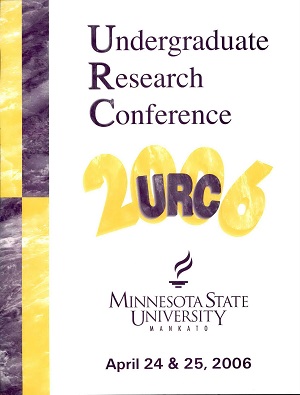The Clash of Expectations and the Origin of the Cold War
Location
CSU 253
Start Date
25-4-2006 8:45 AM
End Date
25-4-2006 10:15 AM
Student's Major
Government
Student's College
Social and Behavioral Sciences
Mentor's Name
Eiji Kawabata
Mentor's Department
Government
Mentor's College
Social and Behavioral Sciences
Description
The need to understand the origin of the Cold War is as compelling as ever. Though the Cold War ended over a decade ago, hindsight compels us to reexamine long held assumptions about the conflict. Was it inevitable? When and why did it start? Why was it so severe? This proposal aims to answer these questions by examining the origin of the Cold War through the application of structural realism. This framework, and its basis on power distribution at the system level, has proven to be greatly beneficial to Cold War studies. A paper using structural realism found the competitive behaviors of the Soviet Union and the United States as a natural and inevitable feature of a bipolar power distribution. With this established, the paper undertook a further analysis to explain the severity of Cold War tensions. For this, the paper examined the post-war visions of the United States and the Soviet Union as formulated between the period of 1943 and 1945. In comparing postwar visions to the conclusions reached through structural realism, the paper determined that neither country predicted a bipolar world. Thus, the paper concluded that while Cold War competition was inevitable, the two powers' misguided policies were the deciding factor in creating an unnecessarily intense and dangerous Cold War.
The Clash of Expectations and the Origin of the Cold War
CSU 253
The need to understand the origin of the Cold War is as compelling as ever. Though the Cold War ended over a decade ago, hindsight compels us to reexamine long held assumptions about the conflict. Was it inevitable? When and why did it start? Why was it so severe? This proposal aims to answer these questions by examining the origin of the Cold War through the application of structural realism. This framework, and its basis on power distribution at the system level, has proven to be greatly beneficial to Cold War studies. A paper using structural realism found the competitive behaviors of the Soviet Union and the United States as a natural and inevitable feature of a bipolar power distribution. With this established, the paper undertook a further analysis to explain the severity of Cold War tensions. For this, the paper examined the post-war visions of the United States and the Soviet Union as formulated between the period of 1943 and 1945. In comparing postwar visions to the conclusions reached through structural realism, the paper determined that neither country predicted a bipolar world. Thus, the paper concluded that while Cold War competition was inevitable, the two powers' misguided policies were the deciding factor in creating an unnecessarily intense and dangerous Cold War.
Recommended Citation
Boubel, Gregory. "The Clash of Expectations and the Origin of the Cold War." Undergraduate Research Symposium, Mankato, MN, April 25, 2006.
https://cornerstone.lib.mnsu.edu/urs/2006/oral-session-J/4



